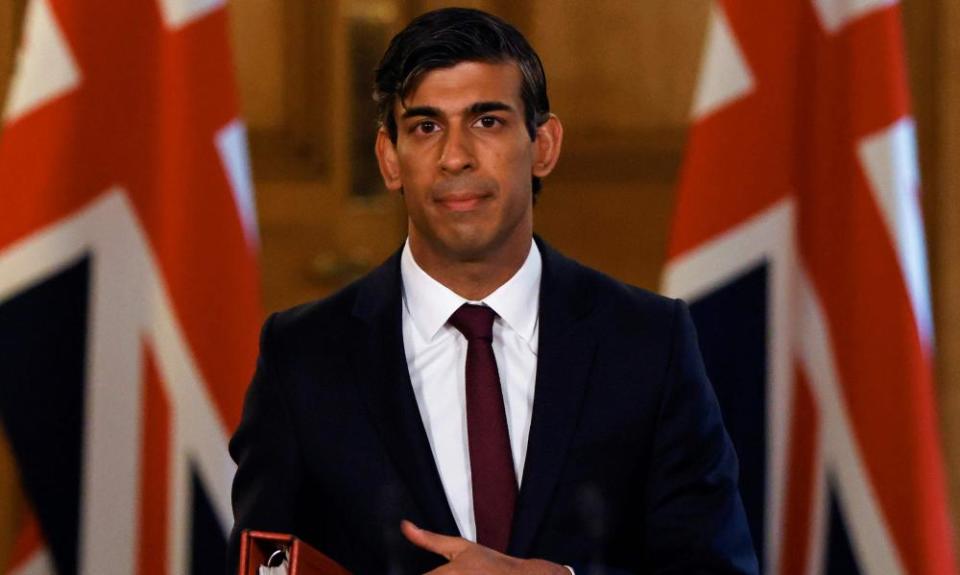UK government borrowing soars to record high during Covid pandemic

UK government borrowing soared to a record high in the first six months of the financial year as the extra spending needed to tackle the Covid-19 pandemic pushed the public deficit further into the red.
Steep falls in tax receipts that accompanied the government’s rescue programmes also increased the UK’s debt-to-GDP ratio to its highest level in 50 years, while inflation rose to 0.5%, according to the latest official figures.
With the second wave of the virus expected to further undermine the public finances, the Office for National Statistics said the government spent more cash than in any September since the 2008 financial crash. It added that the increase in cash spent by departments and devolved governments pushed the total since April to £246bn, nearly three times the highest first-half figure since comparable records began in 1984.
The outflow of funds increased the UK’s overall debt pile to 103.5% of annual national income, the highest debt-to-GDP ratio since 1960.
Related: UK government borrowing rises to £36bn in September and inflation picks up – business live
Rishi Sunak, responding to the figures, said: “Things would have been far worse had we not acted in the way we did to protect millions of livelihoods.”
Borrowing in the current financial year stands at £174.5bn more than the same point last year
Standfirst ...
April to September 2020
April 2019 to March 2020
0
50
100
150
200bn
Apr
Jun
Aug
Oct
Dec
Feb
Guardian graphic. Source: ONS. Note: data shows cumulative borrowing
The chancellor stressed that, as the economy recovers, “the government will take the necessary steps to ensure the long-term health of the public finances”.
Earlier this month Sunak warned “hard choices” would need to be made to tackle record levels of national debt incurred during the coronavirus pandemic, saying the government had a “sacred responsibility” to balance the books for future generations.
In its assessment of the monthly debt figures, the Office for Budget Responsibility (OBR) said borrowing was lower than it expected in its March health check after a recovery in economic activity that had kept more people in jobs than was forecast.
The Treasury’s independent economic forecaster said the higher level of employment had prevented tax receipts from tumbling at the rate it expected, but warned that a rise in Covid-19 cases could delay the recovery and increase unemployment.
“With a resurgence in virus cases and the chancellor announcing new support measures, prospects for the rest of the year remain highly uncertain,” the OBR said.
Consumer price inflation (CPI) increased in September to 0.5% from 0.2% after the end of the Treasury’s eat out to help out scheme, which cut the cost of restaurant meals, along with a nudge up in transport costs.
Jonathan Athow, a deputy national statistician at the ONS, said: “The official end to the eat out to help out scheme meant prices for dining out rose during September, partially offsetting the sharp fall in inflation for August.
UK inflation rose to 0.5% in September
Standfirst ...
CPI %
-1
0
1
2
3
4
5%
2010
2012
2014
2016
2018
2020
Guardian graphic. Source: ONS
He said air fares would normally fall substantially at this time of year following the school holidays but with fewer people travelling abroad, the price drop has been less significant.
“Meanwhile, as some consumers look for alternatives to using public transport, there was an increased demand for used cars, which saw their prices rise.”
Several Tory MPs said they were concerned that the increase in borrowing put the government in a worryingly vulnerable position should inflation climb back above the Bank of England target of 2%, forcing the central bank to raise interest rates.
Steve Baker, the former minister, said there was the prospect of a run on the pound should the Treasury get into financial difficulties servicing the national debt.
But City analysts said the fall in inflation during 2020 to below 1% was likely to continue for many years, allowing the Bank of England to keep interest rates ultra low and letting the government maintain high levels of borrowing through much of the decade.
Paul Dales, chief UK economist at the consultancy Capital Economics, said: “Overall, low inflation and low gilt yields give the Bank of England and the chancellor the green light to do more to support the economy.”
The September inflation figure is used to decide the annual increase in business rates. While retail, leisure and hospitality firms have been given a one-year business rates holiday, this is due to end on 31 March, just before the new rate kicks in on 1 April.
Charities warned that September’s CPI is also used in the calculation of state benefits, meaning payments will rise by just 0.5% next April, which is far less than this year’s 1.7% increase.
Increases in the state pensions will also be affected, although the triple-lock rule means the payout will be the highest figure out of CPI, earnings growth for the year to July, or 2.5%.

 Yahoo News
Yahoo News 